Harvest of scientific results by Solar Orbiter Radio and Plasma Waves instrument
Tuesday, 15 February 2022 13:07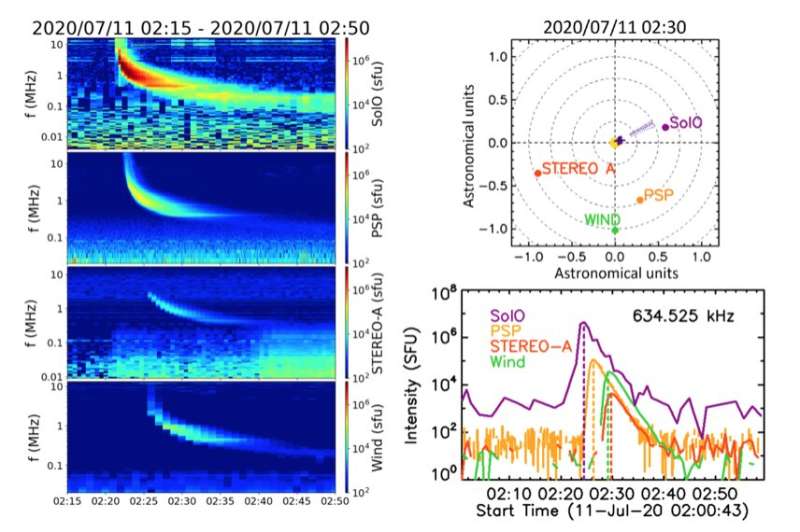
A Chinese spacecraft is testing out a new orbit around the moon
Tuesday, 15 February 2022 12:18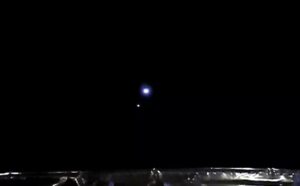
A spacecraft involved in China’s 2020 Chang’e-5 lunar sample-return mission is now in a unique orbit around the Moon, more than a year after completing its primary mission.
On National Security | Congress’ failure to pass a 2022 budget is especially detrimental to the Space Force
Tuesday, 15 February 2022 12:00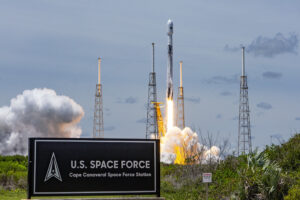
Budget crises aside, the Space Force will have to overcome its lack of size by pushing innovative ideas and showing new approaches in the acquisition of space technologies.
The post On National Security | Congress’ failure to pass a 2022 budget is especially detrimental to the Space Force appeared first on SpaceNews.
China proposes formal lines of communication with U.S. on space safety
Tuesday, 15 February 2022 11:34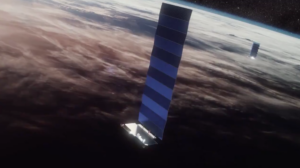
The Chinese government is open to establishing formal lines of communication with the United States on space safety issues after a pair of alleged close calls of Starlink satellites with China’s space station.
Moon should be privatised to end global poverty says 'Space Invaders' report
Tuesday, 15 February 2022 10:44 The protection of the Moon is clearly stated in the 1967 Outer Space Treaty (OST) - an international document that prohibits any state to appropriate the space rock or other celestial bodies.
Researchers from the Adam Smith Institute, a British neoliberal think tank, have suggested that dividing the Moon into regions and privatising it can help end global poverty. However, there is a twist
The protection of the Moon is clearly stated in the 1967 Outer Space Treaty (OST) - an international document that prohibits any state to appropriate the space rock or other celestial bodies.
Researchers from the Adam Smith Institute, a British neoliberal think tank, have suggested that dividing the Moon into regions and privatising it can help end global poverty. However, there is a twist Taiwan researchers join ISRO in satellite launch mission for first time
Tuesday, 15 February 2022 10:44 The launch of the Earth Observation Satellite (EOS-04), scheduled for September 2021, was delayed due to the pandemic as engineers and scientists were working remotely. However, to make up for the delay, the Indian space agency has planned 19 missions, including a Moon landing, in 2022.
The Indian Space Research Organisation (ISRO) on Monday launched a satellite, INSPIRESat-1, jointly deve
The launch of the Earth Observation Satellite (EOS-04), scheduled for September 2021, was delayed due to the pandemic as engineers and scientists were working remotely. However, to make up for the delay, the Indian space agency has planned 19 missions, including a Moon landing, in 2022.
The Indian Space Research Organisation (ISRO) on Monday launched a satellite, INSPIRESat-1, jointly deve Innovation by the dozen: ESA funds 12 OPS-SAT experiments
Tuesday, 15 February 2022 07:00
ESA's OPS-SAT is a Swiss army knife in orbit. The 30-cm CubeSat packs a powerful onboard computer and an array of instruments that make it the ideal laboratory for testing innovative new technologies in space.
Thanks to the ESA Discovery programme, 12 new experiments will be doing just that, as they develop software, concepts and protocols that push the robust CubeSat to its limits and that could one day be essential parts of future spacecraft missions.
Rocket set to hit Moon was built by China, not SpaceX, say astronomers
Tuesday, 15 February 2022 05:37 Astronomy experts say they originally misread the secrets of the night sky last month: it turns out that a rocket expected to crash into the Moon in early March was built by China, not SpaceX.
A rocket will indeed strike the lunar surface on March 4, but contrary to what had been announced, it was built not by Elon Musk's company, but by Beijing, experts now say.
The rocket is now said t
Astronomy experts say they originally misread the secrets of the night sky last month: it turns out that a rocket expected to crash into the Moon in early March was built by China, not SpaceX.
A rocket will indeed strike the lunar surface on March 4, but contrary to what had been announced, it was built not by Elon Musk's company, but by Beijing, experts now say.
The rocket is now said t SpaceX plans new private spaceflight missions, first private spacewalk
Tuesday, 15 February 2022 05:37 SpaceX plans to launch a new private astronaut mission, Polaris Dawn, from Florida as early as Nov. 1 and will attempt to conduct the first private spacewalk in history, the company announced Monday.
Businessman Jared Isaacman, founder and CEO of the payments company Shift4, will command the mission, having previously he led the first all-private orbital mission in September known as In
SpaceX plans to launch a new private astronaut mission, Polaris Dawn, from Florida as early as Nov. 1 and will attempt to conduct the first private spacewalk in history, the company announced Monday.
Businessman Jared Isaacman, founder and CEO of the payments company Shift4, will command the mission, having previously he led the first all-private orbital mission in September known as In Mars rover Perseverance notches a year of science, tech achievements
Tuesday, 15 February 2022 05:37 The Mars rover Perseverance and its feisty sidekick helicopter Ingenuity have set records and pushed new frontiers for interplanetary space exploration since landing on the Red Planet one year ago this Friday.
The flawless landing of the rover in Mars' Jezero Crater, on Feb. 18, 2021, kicked off a year of successes, including the first rock sample drilled on another planet, the first ti
The Mars rover Perseverance and its feisty sidekick helicopter Ingenuity have set records and pushed new frontiers for interplanetary space exploration since landing on the Red Planet one year ago this Friday.
The flawless landing of the rover in Mars' Jezero Crater, on Feb. 18, 2021, kicked off a year of successes, including the first rock sample drilled on another planet, the first ti China hits back at US after satellite near-misses
Tuesday, 15 February 2022 05:37 China has stated the United States is in no position to unilaterally set thresholds for emergency collision after the US rejected the charge its Starlink satellites endangered China's space station.
Foreign Ministry spokesman Zhao Lijian made the remarks at a daily news briefing on Thursday, saying such rhetoric by the US did not show a responsible attitude as a major country strong in aer
China has stated the United States is in no position to unilaterally set thresholds for emergency collision after the US rejected the charge its Starlink satellites endangered China's space station.
Foreign Ministry spokesman Zhao Lijian made the remarks at a daily news briefing on Thursday, saying such rhetoric by the US did not show a responsible attitude as a major country strong in aer NASA's X-59 Calls on Texas for Key Testing
Tuesday, 15 February 2022 05:37 It appears the road to enabling a future that includes convenient commercial supersonic air travel over land demands a substantial pit stop in Fort Worth, Texas.
Who knew?
Aeronautical innovators at NASA and Lockheed Martin did. They have long planned for this milestone in assembling and testing the X-59 Quiet SuperSonic Technology (QueSST) airplane.
Although the X-59 QueSST is
It appears the road to enabling a future that includes convenient commercial supersonic air travel over land demands a substantial pit stop in Fort Worth, Texas.
Who knew?
Aeronautical innovators at NASA and Lockheed Martin did. They have long planned for this milestone in assembling and testing the X-59 Quiet SuperSonic Technology (QueSST) airplane.
Although the X-59 QueSST is New Tool Launches for Astronomy Software Users
Tuesday, 15 February 2022 05:37 The American Astronomical Society (AAS) and partnering organizations Zenodo and the SAO/NASA Astrophysics Data System (ADS) has announced the launch of the Asclepias portal and broker, resources that connect software tools with scientific results to make research progress in astronomy faster, more open, and more reproducible.
Astronomers rely on scientific software to analyze data sets and
The American Astronomical Society (AAS) and partnering organizations Zenodo and the SAO/NASA Astrophysics Data System (ADS) has announced the launch of the Asclepias portal and broker, resources that connect software tools with scientific results to make research progress in astronomy faster, more open, and more reproducible.
Astronomers rely on scientific software to analyze data sets and Bipartisan legislation seeks to reform FCC satellite licensing rules
Monday, 14 February 2022 21:32
The top Democrat and Republican on the House Energy and Commerce Committee announced a bipartisan effort Feb. 11 to update satellite licensing rules for the rapidly changing space industry.
The post Bipartisan legislation seeks to reform FCC satellite licensing rules appeared first on SpaceNews.
NASA's MinXSS instrument CubeSat launches to study sun's flares
Monday, 14 February 2022 21:18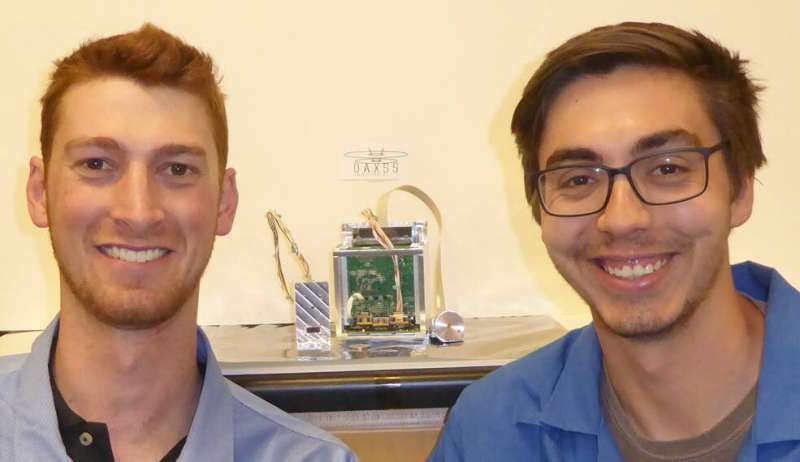
The Miniature X-Ray Solar Spectrometer 3, or MinXSS-3, successfully launched on the InspireSat-1 small satellite at 7:29 p.m. EST on Feb. 13, 2022. Also known as the Dual Aperture X-ray Solar Spectrometer, or DAXSS, it is the third of three NASA-funded MinXSS CubeSats. It will spend up to a year in low-Earth orbit studying X-rays coming from flares on the sun.
The sun sometimes releases flares, which are energetic bursts of light and particles triggered by the release of magnetic energy on the sun that travel across the solar system. X-rays emitted by the sun during intense flares can interfere with GPS, radio, and other communications signals when they reach Earth. MinXSS will study the energetics of these flares in wavelengths known as soft X-rays, which are particularly impactful on Earth's ionosphere—an electrified upper layer of the atmosphere where communications signals travel.

